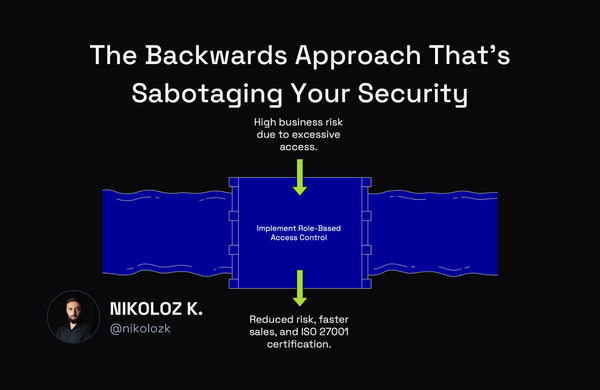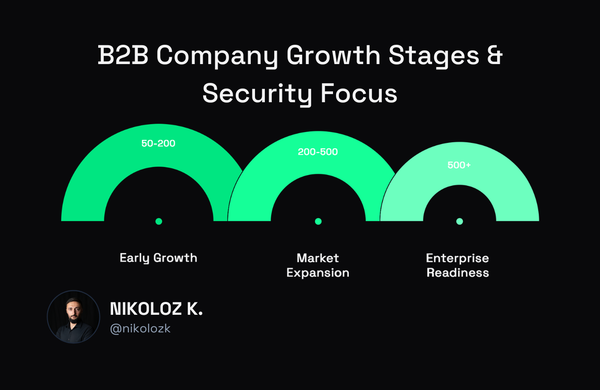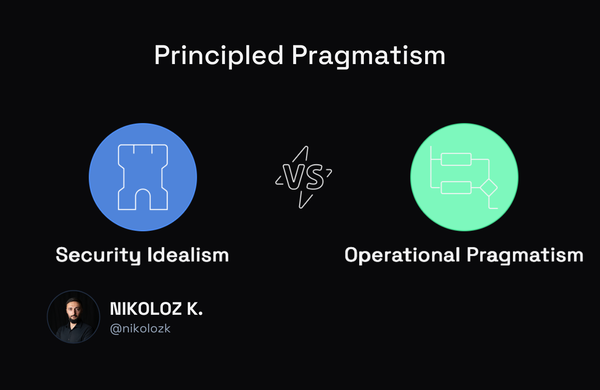Establishing a Security Operations Center

Nikoloz Kokhreidze
Explore key elements for setting up a Security Operations Center (SOC). Learn about essential roles, processes, and technologies for effective cybersecurity.

The world of cybersecurity is constantly evolving, with threats becoming ever more sophisticated and malicious actors demonstrating an increasing appetite for disruption. As such, organizations must be able to preempt, detect, and respond to security incidents swiftly and effectively. One of the most effective ways of achieving this is establishing a Security Operations Center (SOC).
A SOC is a centralized facility where security personnel can monitor, detect, analyze and respond to security threats. It is a crucial part of an organization's overall security strategy and can be the difference between a successful security posture and a disastrous one. While setting up a SOC can be complex and costly, the benefits are immense. This post will discuss the critical considerations for people, processes and technologies when establishing a SOC.
People
The success or failure of a SOC largely depends on the people carrying out the operations. Each SOC will have different personnel needs depending on the size of the organization and the type of threats it faces. But some of the following key positions are essential for any SOC:
Security Analyst: Security analysts are responsible for identifying and responding to security threats. They analyze network traffic for anomalies and investigate potential security incidents. They use various security tools, such as intrusion detection systems (IDS), Endpoint Detection and Response (EDR), and firewalls, to identify and respond to threats. As primary incident responders, Security Analysts should ensure that response playbooks are well-documented and regularly updated. This role is a crucial contributor to designing detection mechanisms and uses cases.
Security Engineer: Security engineers are responsible for designing, building, maintaining, and automating an organization's security infrastructure. They work with security analysts to create detection mechanisms, automate response capabilities and reduce human efforts for security operations.
Threat Hunter: Threat hunters are responsible for proactively searching for threats in the environment. They analyze network traffic, look into different logs and use the power of data in combination with various tools and techniques to identify malicious actors. They then work with security analysts to investigate and respond to any discovered threats. At the end of the hunt, Threat Hunters help Security Engineers design detection mechanisms for specific threat Tactics, Techniques, and Procedures (TTP).
Security Architect: Security architects are responsible for designing the overall security strategy for an organization. They analyze existing security systems and develop strategies to protect the organization from threats. The goal of a Security Architect is to understand how different technologies interact with each other and how attackers can target the organization.
Security Lead/Manager: Security leads or managers are responsible for overseeing the security operations of an organization. They are responsible for ensuring that all security policies and procedures are in place and are being followed. They also manage the security team, ensure they meet their goals, and effectively cooperate within or outside the unit.
Processes
For a SOC to be successful, it needs to have well-defined processes in place. These processes should cover everything from the preparation for the incident and initial identification of a threat to the complete remediation of the incident. It is also essential to establish procedures for regular monitoring and audit activities. These processes should be regularly reviewed and updated to ensure they remain effective in light of the ever-changing threat landscape. If you are establishing a SOC, consider the following:
Playbooks: Playbooks are a vital part of any SOC and are used to effectively and efficiently respond to security incidents. The SOC can quickly and efficiently respond to security incidents by having a playbook in place. A playbook is a set of instructions to promptly determine the best course of action in security incidents, including how to investigate incidents, the steps to take to contain the threat, and how to recover from the incident. Playbooks are also helpful in documenting standard operating procedures and other related processes. This helps to ensure that personnel adhere to the same procedures, regardless of the situation.
Service Level Agreements: SLAs are contracts between two parties (such as the SOC and the customer) that outline the responsibilities of each party and the level of service each party is expected to deliver. SLAs are used to ensure that the SOC can meet the customer's needs and expectations while also ensuring that the customer clearly understands the SOC's capabilities. SLAs help SOC effectively manage security incidents and promptly respond to customer needs. They also provide a framework for the SOC to operate within and can help ensure that personnel follow the correct procedures and processes.
Detection and Prevention Processes: Detection and prevention processes are essential to the SOC, as they help ensure that the SOC can identify and respond to potential threats in a timely manner. Detection processes usually focus on the risks, threats and vulnerabilities that SOC is tasked to identify. This process usually defines key elements to log, critical use cases, alerting mechanisms and priorities of those alerts. Prevention processes focus on the actions that need to be taken to harden the infrastructure and make it harder for attackers to target the organization.
Technologies
Having the right technologies in place is essential for a successful SOC. SOCs are designed to monitor networks and systems for any malicious activity. A SOC can quickly detect, investigate, and respond to cyber threats by deploying the right technologies. To be effective, a SOC needs to be equipped with a range of security solutions that can automate and streamline various security operations. Some of the key technologies are:
Security Incident and Event Monitoring: SIEM solutions are the foundation of a SOC. They provide real-time monitoring of networks and systems, as well as log management and event correlation capabilities. SIEM solutions can detect anomalies and suspicious activities, thus allowing organizations to respond quickly to potential threats.
Endpoint Detection and Response: EDR solutions offer advanced threat prevention, detection, and response capabilities. They can detect malicious activities on endpoints and help organizations respond to threats quickly and effectively. EDR solutions can also help organizations identify malicious files and suspicious activities on endpoints while isolating hosts and removing malware.
Cloud Access Security Broker: CASB solutions are designed to help organizations protect their data and networks in the cloud. CASB solutions provide real-time monitoring of cloud services and can detect anomalies and suspicious activities. By deploying a CASB solution, organizations can ensure that their data and networks are secure in the cloud. Furthermore, a CASB solution can serve as a context input for SIEM when identifying network and application access activities.
Conclusion
Setting up a Security Operations Center is a complex and costly undertaking essential for successfully managing security threats. When establishing a SOC, it is crucial to consider the critical elements of people, processes and technologies. Having the right team in place, with well-defined processes and the necessary technologies, can make a huge difference.The Mandos Way is a reader-supported publication. To receive new posts and support my work, consider becoming a free or paid subscriber.


